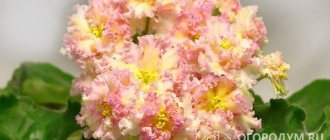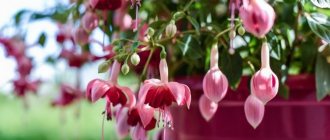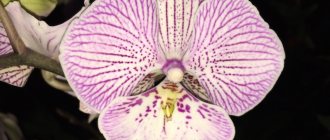For city dwellers, landscaping a loggia or balcony is often the only opportunity to get closer to nature - it is at the same time decoration, a way to lift their spirits, relaxation and easy work with the soil. In order for plants to bring joy, they need to be chosen correctly, for example, flowers for the sunny side should not only be light-loving, but also withstand direct sunlight.
Selection of flowers for growing in the sun
For south-facing balconies, the largest selection of plants can be found among flower beds.
They must meet the following requirements:
- do not be afraid of direct sunlight;
- grow quickly and reach the peak of decorativeness;
- develop normally in a limited volume of a pot, box or other container;
- put up with periodic lack of moisture;
- bloom continuously;
- does not require careful care;
- respond well to mineral supplements.
The owners decide on their own which flowers to plant at home on the sunny side - there are many of them. The article will help you make the right choice - not everyone knows the characteristics of a particular culture. Perhaps gardeners will pay attention to plants that were not previously considered as “candidates” for planting in containers.
Many annual flowerbed flowers are perennials in their homeland. It is possible to save the bushes until the next season, but not all will bloom as profusely as those grown from seeds or cuttings.
Kermek
This perennial is sometimes cultivated in mid-latitudes as an annual and has many species. Kermek is also called sea lavender or immortelle.
The plant is disease resistant and can grow even in poor soil. One of the convenient features of Kermek is that it is almost not harmed by a lack of moisture.
Worse for the flower are sub-zero temperatures and strong shading. Therefore, it is best to place it on a south window, balcony or loggia.
Petunia for the south balcony
When asked what flowers are not afraid of direct sunlight, are able to remain decorative throughout the season and feel great in container culture, petunia comes to mind first. There are several varieties with different growth patterns and corolla diameters.
Petunias have an attractive appearance, fragrant flowers are symmetrical, similar to a gramophone or a funnel with a long tube. The corollas with fused petals are double or simple, single-colored, edged or covered with streaks. Any color except orange or deep yellow. Fragile stems and small whole leaves are pubescent. The length of the shoots varies from 20 cm to 2 m.
Large-flowered or grandiflora
This petunia comes in many varieties, has the largest flowers, but is the most difficult to care for. The diameter of the corolla in some cultivars reaches 12 cm, and can be double or two-colored.
Plants feel great on a south-facing balcony. But large flowers can be damaged by prolonged rains or strong winds.
To preserve the decorative effect, faded buds must be regularly removed, and bare stems must be trimmed periodically.
Multi-flowered or multiflora
The flowers of this group reach a diameter of 5-7 cm. They are not as beautiful as those of petunia grandiflora, usually of the same color, but they completely cover the bush, which looks especially impressive. The plant is not capricious, resistant to diseases and suffers less from weather disasters.
There are self-cleaning varieties - you don’t need to pick off their wilted buds.
Floribunda
Occupies an intermediate position. Corollas with a diameter of up to 10 cm, varieties differ in a variety of shapes and colors. They suffer from wind and rain, but not as much as grandiflora.
Petunia ampelous or pendula
Often used for vertical gardening, planting in balcony boxes or hanging flowerpots. Despite the long shoots, it is not used as a climbing plant - the branches do not cling to the support, but hang picturesquely.
It’s better not to even try to point the pendula upward with a garter - the stems break easily.
Divided into three groups depending on the length of the shoots:
- semi-ampel - up to 30 cm;
- hanging - 35-80 cm;
- cascade - up to 2 m (usually about 1 m).
Surfinia, an ampelous petunia bred by the Japanese company Suntory, belongs to this group.
Thunbergia
Orange, purple, lilac, blue and white thunbergia flowers can decorate any balcony or loggia. In temperate latitudes, the plant is cultivated as an annual, but in a glassed room, thunbergia can remain in the cool season.
The soil mixture used is turf, leaf soil, peat soil and sand. Thunbergia is watered very sparingly, but when it begins to bud, watering should become abundant. On a hot day, flowers are sprayed with water from a spray bottle, always in the evening.
Upright flowers for the sunny side
Planting flowers that form a compact bush or spreading, but do not have flowing shoots, for the sunny side is usually done in balcony boxes or pots. If you place them in hanging pots, the plant will be difficult to see and will lose some of its attractiveness.
Gatsania
African chamomile forms a bush up to 30 cm high. The inflorescence is a basket with a diameter of 5-9 cm with a yellow center and bright petals: yellow, red, orange, white. They can be one color, but more often they are decorated with longitudinal strokes and a contrasting dark spot at the base.
Drought-resistant crop. One bush per season, with satisfactory feeding and timely removal of faded buds, can produce up to 35 flowers.
If you leave several gatsanias in a bright, cool place for the winter, in the spring the bush can be divided into rosettes and planted. They will bloom earlier than those obtained from seeds.
Violet tricolor
You can grow pansies on a sunny balcony. This unpretentious miniature plant is distinguished by dark narrow leaves and an asymmetrical five-petal corolla with a diameter of up to 10 cm.
It seems that the flowers are as unique as snowflakes - even on the same bush their color is at least slightly different. It can vary from white to almost black - deep purple or burgundy, be plain or combined, with spots or streaks of different sizes.
Pansies grown in a two-year culture bloom longer and more abundantly.
Tagetis or marigolds
Varieties of marigolds with a height of 20 to 50-60 cm are excellent flowers for a sunny loggia. They form an erect bush with feathery leaves, hollow stems, simple, semi-double or double inflorescences-baskets and a pronounced cylindrical spathe. Depending on the variety, Tagetis flowers have a diameter of 1-6 cm and are yellow, orange, or brown in color.
When rubbed, all parts of the plant emit a strong, pleasant aroma.
Since the root system of marigolds is taprooted, you need to choose a deep pot or box. To ensure the continuous formation of new buds, the “heads” that have lost their decorative effect are torn off.
Salvia sparkling
In flower culture, Salvia sparkling is grown as an annual plant. The seedlings are transferred to the balcony when the weather is warm. The plant prefers a sunny place, light, well-fertilized soil. Organic and mineral fertilizers are perfect for it.
The bushes are watered from time to time; for this you need to carefully monitor the condition of the soil. It is also necessary to provide them with normal air circulation.
Ampelous flowers for the sunny side
The most popular plants for planting on the balcony are plants with bright buds and flexible stems that beautifully bend or fall below the edge of the container. They are called ampelous or ampelous. Many can withstand direct sunlight very well.
Lobelia
A compact, dense bush with thin, densely branched shoots 10-20 cm long, completely dotted with small two-lipped flowers with a diameter of no more than 2 cm. They are usually painted blue, violet or light blue, but there are varieties with white and purple corollas, or stems reaching 1 .5 m.
Flowering begins in June, lasts until September, and with good care longer. Lobelia is usually planted with other plants, for example, geraniums, tagetis, petunias of contrasting colors.
The seeds germinate well, but when picking, inexperienced gardeners often have problems. Lobelia seedlings are tiny; the stems are not separated one by one, but are planted in individual cups in bunches.
Nasturtium or capuchin
Among the varieties there are vines, ampels and erect bushes with flexible shoots. In nasturtium, not only the yellow, orange or red asymmetrical funnel-shaped flowers, but also the leaves are of decorative value.
Capuchin is not only an ornamental plant, but also an edible and medicinal plant.
Pelargonium or geranium
There are many species used as flower beds, container plants and indoor plants. As flowers for the sunny side of the balcony, varieties of ampelous (ivy-leaved) geraniums are of greatest interest.
The plant is a bush with shoots from 25 cm to 1 m long, first ascending, then drooping. The flowers are collected in an umbrella and can be simple, double, similar to pink buds that have not fully opened. Color – white, all shades of pink, red, to very dark burgundy.
The leaves are quite hard, smooth, similar to ivy. When rubbed they release a specific aroma. It is believed to calm and relieve headaches.
Pelargonium ivy blooms almost continuously.
This is a perennial plant; with the onset of cold weather, flowerpots can be brought into the house, and bushes can be transplanted from a balcony box into pots. To preserve its decorative appearance, it needs to trim the stems and remove faded flower stalks.
Purslane
This crop is very thermophilic and at temperatures below +10 degrees the leaves may begin to fall. To get lush flowering of purslane, it is placed in the driest and well-lit place.
If you plan to sow purslane directly into containers placed on the balcony, this can only be done in mid-June.
There is no need to add peat to the soil when planting; a mixture of garden soil and coarse sand will suffice. Water the flower once every five days with warm filtered water.
Climbing plants for a balcony in the sun
Perhaps this is the smallest group for landing on loggias. It is necessary that the flowers not only withstand direct sunlight, continuously produce buds, but also grow quickly.
Sweet pea or china
There are more than 1000 varieties. The plant is widely used in vertical gardening and is valued for its pleasant aroma and abundant flowering. The flexible stems are decorated with light green pinnate leaves, at the top of which there are tendrils clinging to the support. Branches weakly.
The flowers are collected 3-7 pieces in a brush, asymmetrical, similar to a sail or moths. Buds appear from June-July until frost. Any color except yellow.
Sweet peas will not grow in a flat pot.
morning glory
A liana about 5 m long with heart-shaped leaves is often called a loach. The flowers look like a gramophone, have a long stem and a pleasant smell. They densely dot the shoots, open only in bright sun, and are closed in cloudy weather. Blue, violet, blue, pink, red buds appear at the beginning of summer, replacing each other, decorating southern balconies until frost.
Kobeya
One of the most beautiful flowers for a balcony on the sunny side is the climbing, fast-growing annual kobeya shrub. The liana is up to 6 m long and can cling to brickwork or other uneven surfaces. The leaves are beautiful, pinnate, with 3 large lobes.
The flowers are bell-shaped, with a wavy edge of the corolla, up to 8 cm in diameter, on long stalks. The buds are greenish-yellow, and when fully opened they become white, purple, or different shades of purple.
It is difficult to choose flowers for the sunny side - there are many of them, all are beautiful, most are easy to care for. Here it is important to observe the measure and make sure that the colors are combined and the smells do not mix.
Phlox Drummond
Annual phlox, which includes the popular Drummond phlox, come in a wide variety of shades: chocolate, peach, beige, cream and coffee. The shape of the petals of this plant resembles a star, which is not found among perennials.
Flowers will appear on the glazed southern balcony in May. With proper care, the flowering period lasts a whole season.
The bushes grow magnificently, so when planting seedlings you need to leave 30 cm between them. Water the phlox regularly, while slightly loosening the soil.











